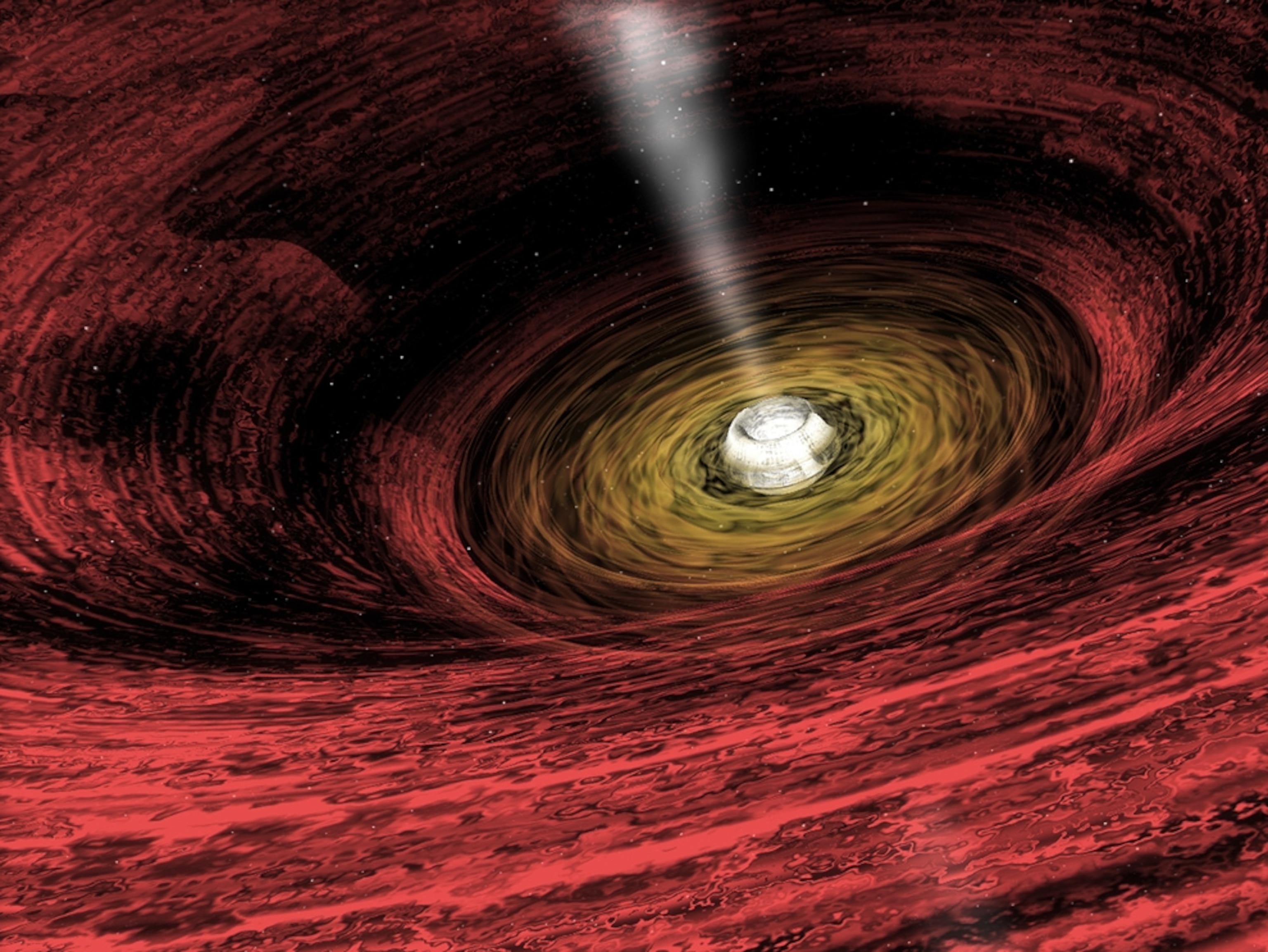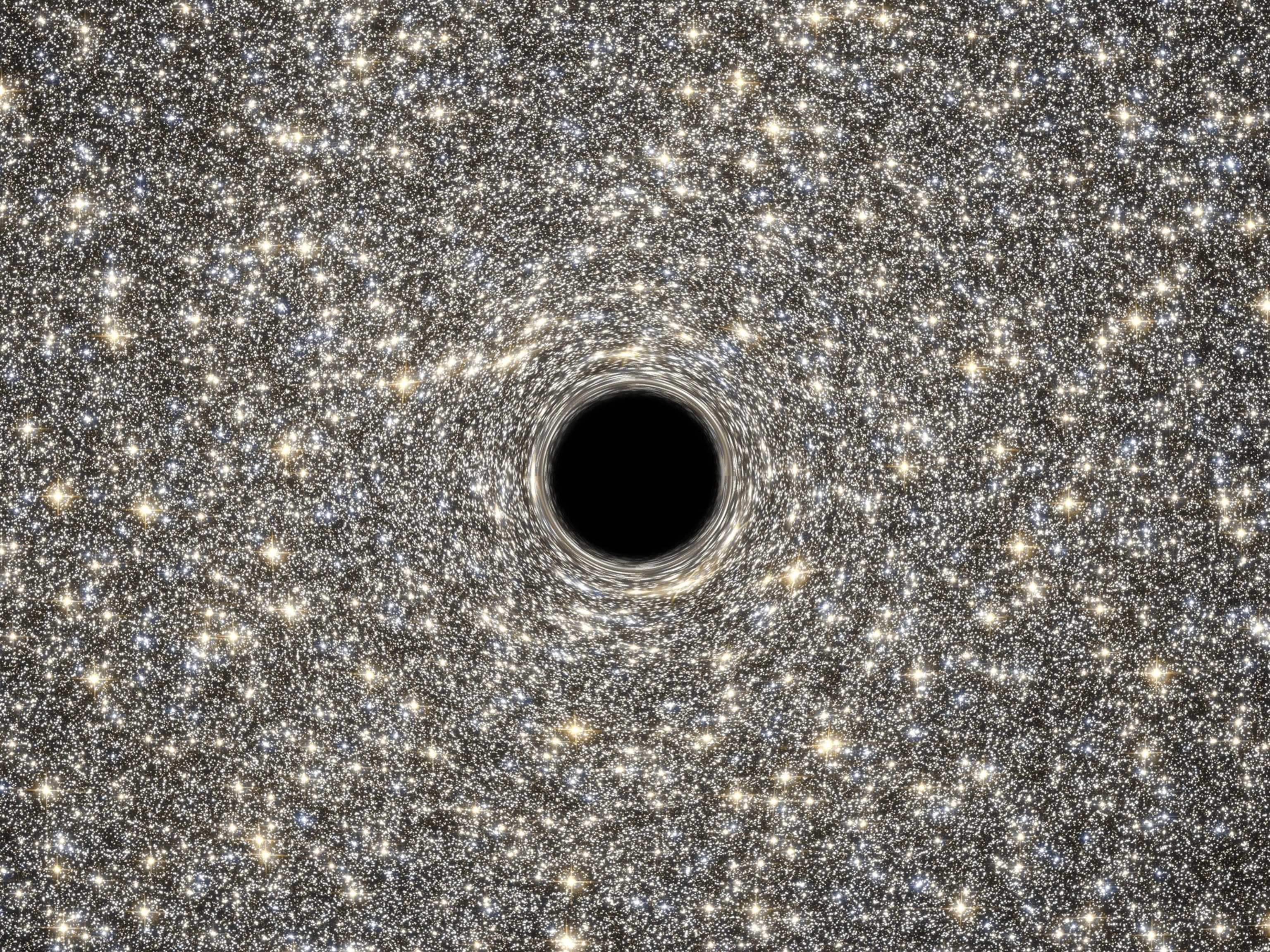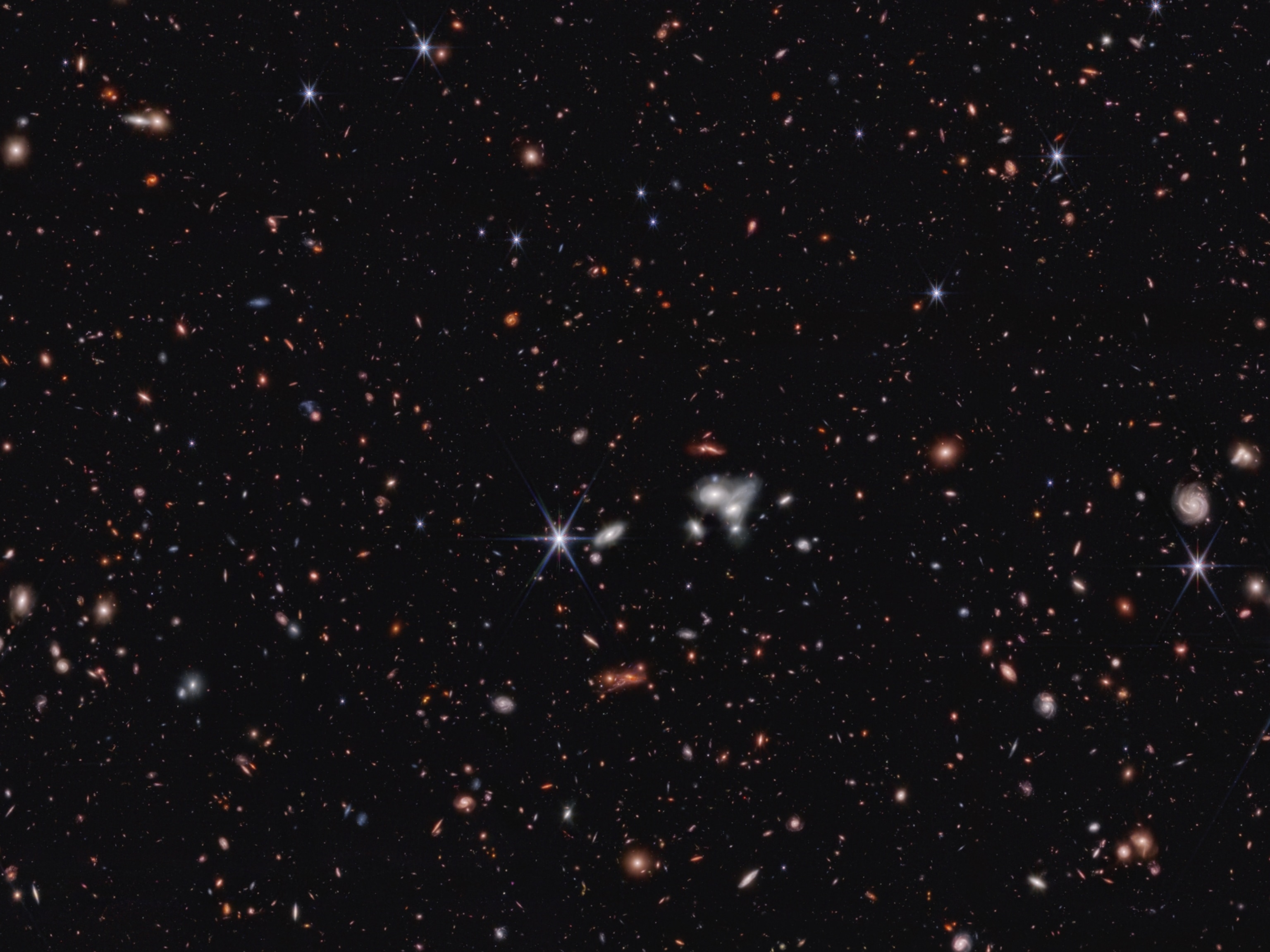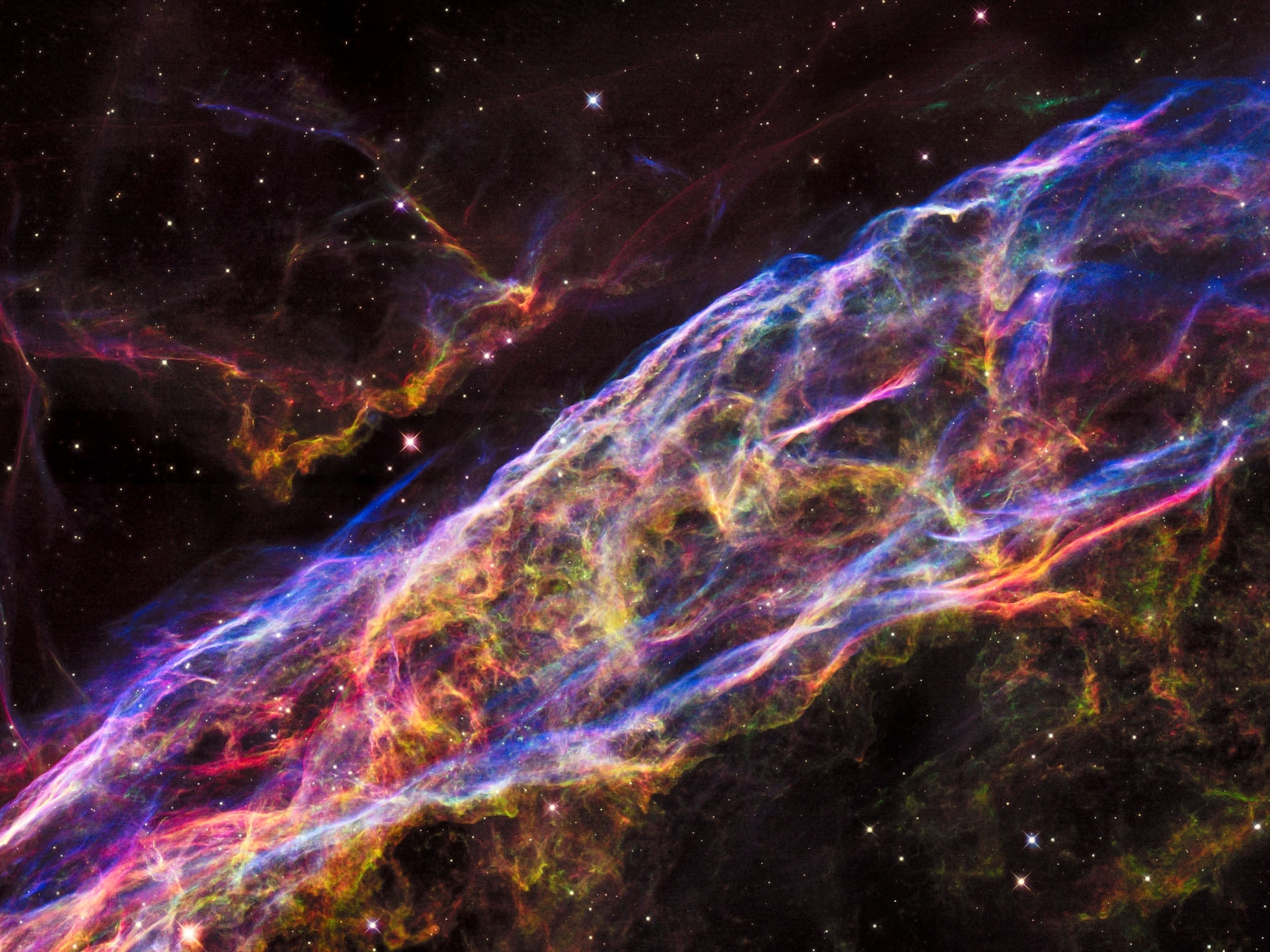
Giant Black Holes Found at Dawn of the Universe
New look at x-ray data reveals monsters at hearts of first galaxies.
Long gazes into deep space have turned up something huge: Signs of supermassive black holes devouring matter at the hearts of the universe's first galaxies.
Theorists had suspected that such enormous black holes existed just a billion years after the big bang, since most if not all of mature large galaxies have the matter-gobbling monsters at their centers.
(Related: "Immaculate Black Holes Found Near Universe's Conception.")
Matter falling in to black holes collides at blinding speeds and bleeds energy, ultimately generating bright x-rays, so scientists turned to the space-based Chandra X-ray Observatory to provide proof for very distant—and therefore very early—black holes.
But at first even a 45-day stare into deep space—the longest and deepest yet in the x-ray spectrum—didn't provide compelling evidence.
Now, by pooling those Chandra images and looking for correlations in the data, astronomers have found the missing x-rays.
The rays took at least 13 billion years to reach Earth's telescopes, so they were emitted by perhaps the first supermassive black holes ever formed in the universe. Many of the black holes are a hundred thousand to a million times heftier than our sun.
(Related: "Huge Black Hole Found in Dwarf Galaxy.")
"These are probably the progenitors of the supermassive black holes we see now. We got them right at the very beginning," said study leader Ezequiel Treister, an astrophysicist at the University of Hawaii.
More "Baby" Black Holes Yet to Be Found?
To find the missing black holes, Treister and colleagues started looking at distant galaxies in the Hubble Space Telescope's famous Ultradeep Field, a long-term observation that captured light from galaxies about 13 billion years old.
Because of limits on the speed of light, the farther away a celestial object is, the younger it must be. Since our universe is estimated to be 13.75 billion years old, the Hubble galaxies are from the dawn of the universe.
For its record x-ray observation, Chandra stared in the same spot as Hubble, so astronomers could map Chandra's x-ray imagery on top of Hubble's visible light images.
While the x-ray observations alone didn't indicate black holes in the galaxies, the new analysis revealed noticeable signals in 197 of the galaxies, or about 30 percent.
Treister suspects all of the early galaxies may have supermassive black holes that we aren't yet able to detect.
The team mostly found energetic x-rays instead of the "soft," lower-energy x-rays black holes typically emit. Thick material blanketing the supermassive black holes might have allowed only the most powerful x-rays to escape, the team surmises.
"Large amounts of gas and dust may explain why we haven't seen anything before. They're all hidden," Treister said.
(Related: "'Hidden' Black Holes Discovered in Distant Galaxies.")
In the future, Treister would like to see an even longer x-ray stare that peers deeper into space and further back in time. Doing so may allow astronomers to find other early supermassive black holes—and solve a greater mystery about the universe.
"Galaxy formation and supermassive black holes have a strong connection, but we're not sure to what extent which causes the other. It's a chicken-and-egg problem," he said. "Looking back further in time may give us some clues."
The early black hole study will be published June 16 in the journal Nature.





